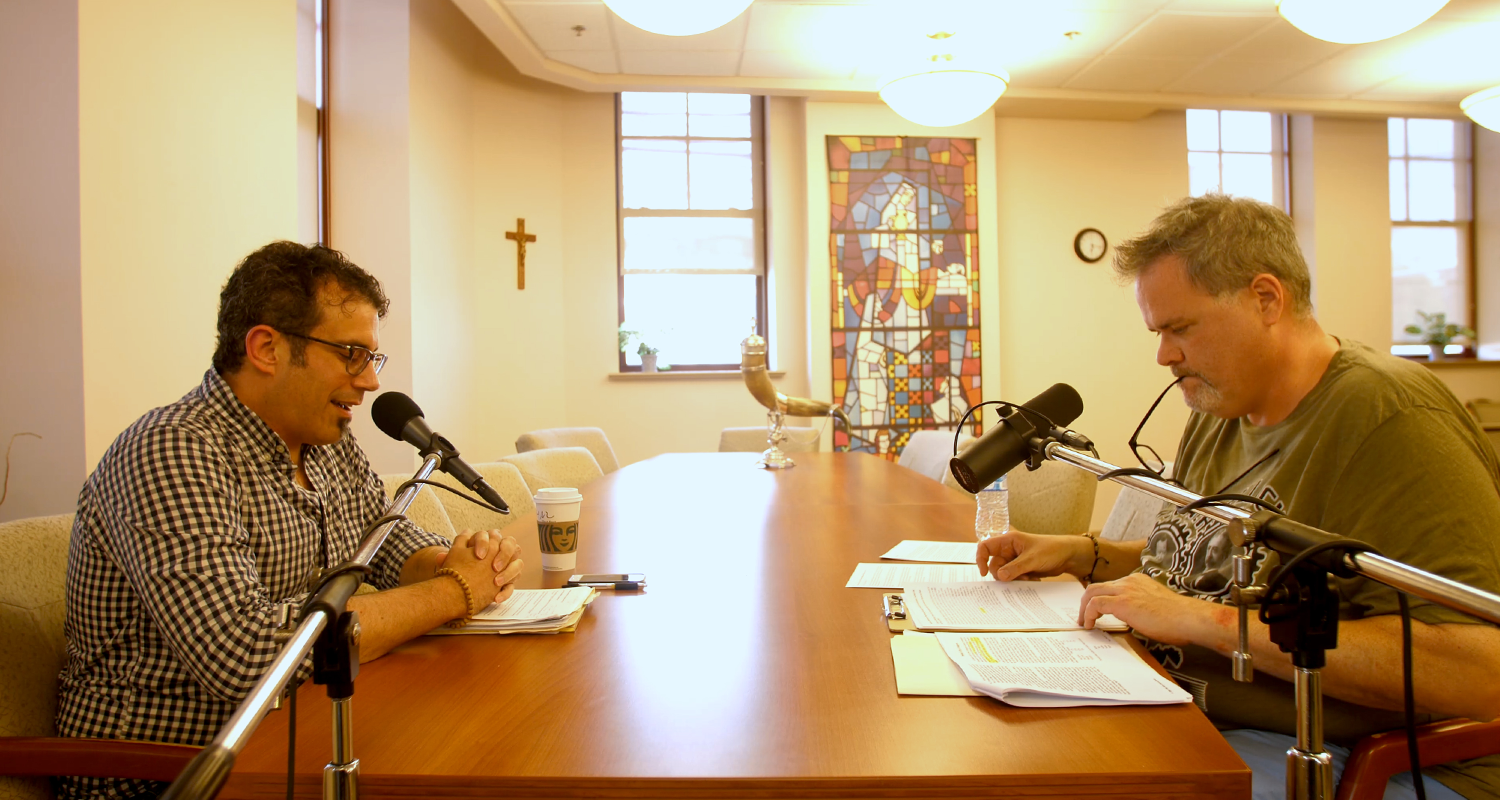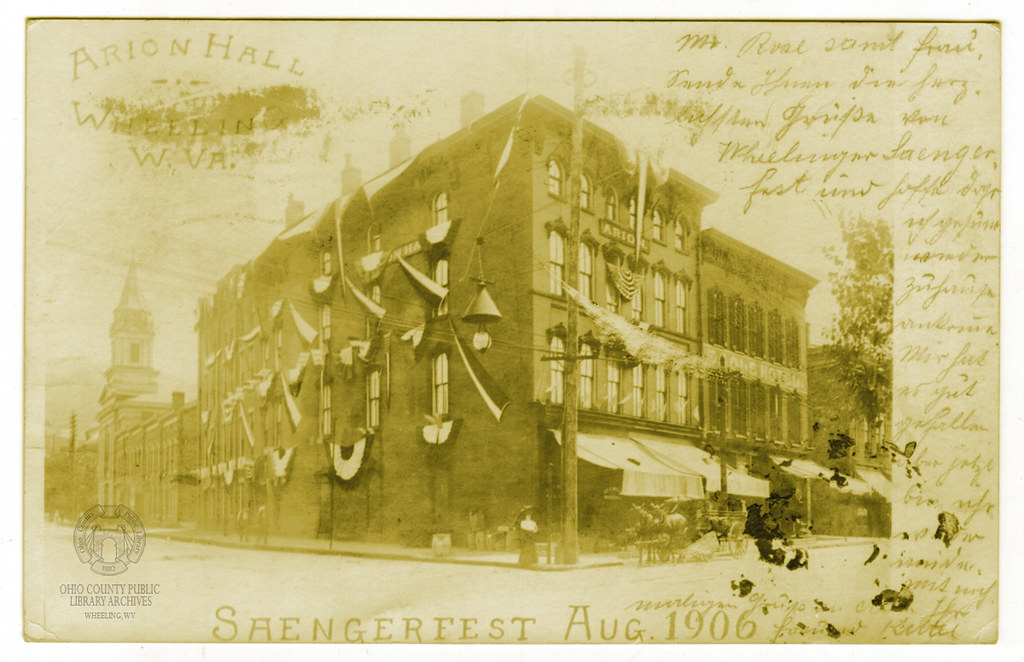Many immigrant groups have made their mark on Wheeling and influence it to this day. But did you know that at one point Wheeling was known as a little German city?
Episode 1 of “Henry: The Life and Legacy of Wheeling’s Most Notorious Brewer” delves into the history of German immigrants in Wheeling and their cultural influence. After all, Henry Schmulbach was a German immigrant himself, as he and his family came to the United States from Germany when he was eight years old. For more than 60 years, Germans were the majority ethnic group in Wheeling. The German American community in Wheeling was a force in Henry’s life and its legacy is still prominent in Wheeling today.
Listen Now: Henry, Episode 1 – German Wheeling
For instance, the Schmulbach family attended church at First German Evangelical Lutheran Zion Church of Wheeling. Today, this building is known by a different name – Towngate Theatre. These photos show how the building looked during Henry’s later years and how it looks today. As discussed in the episode, Henry was confirmed at the church as part of the class of 1859 and likely attended German heritage and language classes there. Since then, the building has lost its spire but gained an even richer history.
German singing societies are another fascinating part of the history of German Wheeling and Henry Schmulbach himself. These were singing groups for Germans and German Americans. The three main groups in Wheeling were the Arion, Mozart and Beethoven societies. In fact, the members of the Mozart society were mostly Schmulbach Brewery employees. The Saengerfests, which were festivals where many German singing societies came to perform, brought these Wheeling societies onto one stage. Personally, the most surprising part of this episode was learning about the three large Saengerfests held in Wheeling in 1860, 1885 and 1906. For instance, did you know that in 1906 Wheeling hosted a Saengerfest where 700 singers performed together on stage at the Court Theatre? These photos show how the Court Theatre and the Arion Hall (home of the Arion singing society) in downtown Wheeling looked for the 1906 Saengerfest. Today, Arion Hall is the home of Catholic Charities. To learn even more about Wheeling’s Saengerfests, check out this article by Archiving Wheeling!
However, the most famous building associated with Henry Schmulbach is his own. The Schmulbach Building was built in 1907 and, to this day, is the tallest building in Wheeling. This episode discusses a cartoon of Henry Schmulbach atop his building, seen here. Today, the Schmulbach building is perhaps better known as the Wheeling-Pitt Building, as it was the headquarters of yet another famous historic business – Wheeling-Pittsburgh Steel. While the building has been vacant since 2013, it will soon enter another new chapter as a new renovation plan proposes to turn the building into apartments.
Finally, the last physical legacy left by Henry Schmulbach was his gravesite. In the episode, we learned that Henry and his brewing rival Anton Reymann have continued their rivalry even past death. Both men are buried in Greenwood Cemetery, where they have the tallest monuments. Schmulbach’s monument is a Corinthian column and Reymann’s is an obelisk. Although it’s not exactly clear whose monument is taller, these photos show their impressive final resting sites. For a truly interactive experience, visit Greenwood Cemetery to decide the winner for yourself!
These are just a few physical examples of the lasting legacy of the German community and Henry Schmulbach in Wheeling. While we still celebrate the annual Oktoberfest at Centre Market and “Oglebayfest” at Oglebay Park, other immigrant groups in Wheeling have also been very influential. Many immigrants from places like Greece, Lebanon, Italy, India, Poland, Ireland and beyond have shaped the city and left their mark through festivals and cultural events. To learn even more about German Wheeling, Henry Schmulbach’s early years, Sangerfests, other immigrant communities, and more, be sure to listen to the first episode of Henry!
If you are thirsty for more about Henry Schmulbach and brewing, here is a bonus video covering a subject not discussed in the podcast – drinking horns! Drinking horns have existed in various cultures for over 2000 years. They were widely used by Scandinavian and Germanic peoples for much of the Middle Ages. There was a medieval revival in the 19th century that re-established the popularity of the drinking horn as a historic symbol.
[template_part type="video" title="Henry: Behind the Scenes - Arion Drinking Horn" description="Hal Gorby and Sean Duffy discuss a German drinking horn at Arion Hall in Wheeling." url="https://youtu.be/2d1onsptseQ"]• Katherine Leary is a summer intern at Wheeling Heritage. She is from Wheeling and is currently a senior at Wellesley College in Wellesley, Massachusetts studying History.











